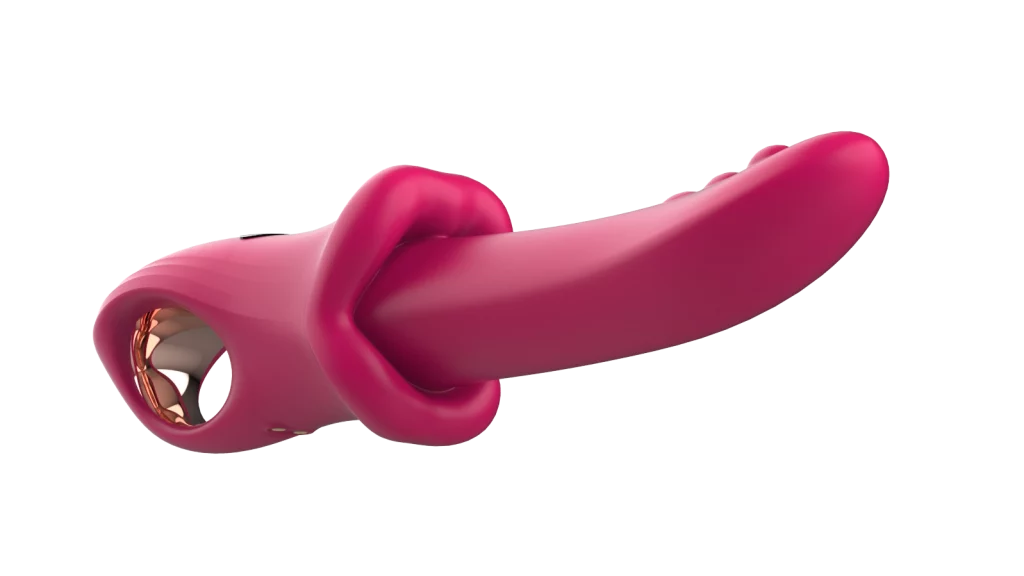![]()
Silicone parts processing is a crucial aspect of modern manufacturing, characterized by its adaptability and the superior properties that silicone materials exhibit. Understanding the fundamentals of silicone parts processing can lead to enhanced performance and broader applications across various industries. This article explores the key techniques involved in silicone parts processing, the advantages of silicone materials, and best practices for ensuring optimal product quality.
Understanding Silicone Parts Processing
Overview of Silicone Material Properties
Silicone is a synthetic polymer known for its unique flexibility, resilience, and thermal stability. Unlike traditional rubber, silicone has a high tolerance to extreme temperatures, making it suitable for various applications in demanding environments. Additionally, silicone exhibits excellent chemical resistance, is non-toxic, and is an outstanding electrical insulator. Its innate properties allow for a wide range of forms and shapes, enhancing its usability in different sectors.
Advantages of Silicone in Manufacturing
One major advantage of silicone in manufacturing is its durability, as silicone parts have a longer lifespan compared to those made from other materials. They are also lightweight yet strong, providing robustness without the inconvenience of added weight. Furthermore, silicone’s biocompatibility makes it an ideal choice for the medical and food industries, where hygiene and safety are paramount. The ability to custom silicone formulations allows manufacturers like CASINDA to produce specialized products that meet specific performance requirements across various markets.
Industries Benefiting from Silicone Part Applications
Numerous industries leverage silicone part applications due to their functional benefits. The automotive sector utilizes silicone for seals, gaskets, and insulators that withstand high temperatures and potential wear. In electronics, silicone components serve as encapsulants and connectors, ensuring reliability and performance in devices. The healthcare industry employs silicone in medical devices and packaging, given its inert nature. Moreover, the food sector utilizes silicone for various kitchen supplies and food storage solutions, capitalizing on its safety and durability.
Techniques for High-Quality Molding
Compression Molding Process
Steps Involved in Compression Molding
Compression molding is one of the primary techniques for silicone parts processing. It involves placing pre-formed silicone material into a mold, which is then heated and compressed to create the desired shape. The process starts with the preparation of the mold, followed by the loading of silicone material into the cavity. Once filled, the mold is closed, and heat and pressure are applied to cure the silicone. The end result is a high-quality product with precise dimensions and finished surfaces.
Factors Influencing Compression Molding Quality
Several factors can affect the quality of products produced through compression molding. These include the accuracy of mold design, uniformity in material preparation, and control of temperature and pressure during the curing process. Manufacturers like CASINDA invest in advanced molding technologies to optimize these factors, ensuring consistent quality in every batch. Regular maintenance of equipment and thorough inspections at each step are also critical for achieving optimal performance.
Injection Molding Process
Detailed Workflow of Injection Molding
Injection molding represents another effective technique in silicone parts processing. This method involves melting silicone material and injecting it into a preheated mold under high pressure. The workflow begins with material preparation, where liquid silicone rubber (LSR) is mixed. This mixture is then injected into the mold cavity, where it undergoes curing under heat and pressure. The robust nature of injection molding allows for complex shapes to be produced quickly and efficiently.
Advantages of Injection Molding for Silicone Parts
The injection molding process offers several advantages, including high production rates and improved material utilization. It allows for intricate designs and can produce high-precision parts within tight tolerances, reducing waste. Additionally, this method supports the production of multi-cavity molds, enabling manufacturers to churn out numerous parts in a single cycle. With CASINDA’s advanced equipment, such as liquid feeding machines and hydraulic presses, the injection molding process can further enhance efficiency and reduce cycle times.
![]()
Considerations for Enhanced Performance
Material Selection and Preparation
Purity and Composition
The selection and preparation of silicone materials are pivotal for ensuring performance and product longevity. High-purity materials yield superior results, minimizing contaminants that may affect the properties of the finished products. Manufacturers often analyze the chemical composition of raw materials to ensure they align with desired specifications for physical and chemical performance. Working with reliable suppliers is essential to maintaining high standards in silicone materials.
Pre-Treatment Methods
To maximize the effectiveness and adhesion of silicone parts, pre-treatment methods such as plasma treatment or chemical etching may be employed. These methods clean the surfaces of the mold and enhance the bonding properties of the silicone. Properly pre-treated surfaces lead to improved performance and durability in final products, allowing businesses like CASINDA to meet or exceed client expectations consistently.
Mold Design and Fabrication
Importance of Precision in Mold Design
Precision in mold design is crucial to achieving the intended functionality of silicone parts. Properly designed molds ensure that all product features are replicated perfectly, contributing to performance consistency. Manufacturers must take into account various factors, such as thermal expansion and shrinkage rates of silicone materials, during the mold design phase. Investing in advanced mold fabrication techniques can also enhance dimensional accuracy and surface finish.
Common Challenges and Solutions in Mold Fabrication
Mold fabrication often presents challenges, including design complexity and material selection. Manufacturers can encounter issues related to mold distortion or wear over time, impacting the quality of parts produced. To address these challenges, ongoing maintenance, material treatments, and the use of advanced design software are essential strategies. With CASINDA’s extensive experience in the industry, solutions can be tailored to accommodate specific challenges, paving the way for high-quality outcomes in silicone parts processing.
Post-Processing Methods for Optimization
Surface Treatment and Finishing
Types of Surface Treatments Available
Surface treatment is a strategic aspect of silicone parts processing that enhances the aesthetic and functional qualities of silicone components. Treatments such as plasma activation, chemical priming, and texturizing are employed to modify the surface characteristics of silicone parts. These methods aim to enhance adhesion properties, prepare the surface for painting or coating, and improve tactile properties. Manufacturers commonly use these treatments to optimize silicone parts for specific applications, ensuring effective integration with other materials and components.
How Surface Treatment Enhances Durability
Implementing surface treatment in silicone parts processing not only improves the adherence of paints and adhesives but also bolsters the fundamental integrity of the products. Enhanced surface characteristics can lead to increased resistance to wear, reducing the likelihood of physical degradation over time. Moreover, surface treatments can bolster resistance to environmental stressors, such as moisture and UV exposure, thereby extending product lifespans in diverse applications. CASINDA leverages state-of-the-art surface treatment techniques to enhance the commercial viability and functional performance of its silicone parts.
Quality Control Measures in Silicone Parts Processing
Inspection Techniques
Dimensional Tolerances and Measurement Tools
Accurate measurement of dimensions is critical to the performance of silicone parts, as even minor deviations can have significant implications for usability. Various measurement tools, including calipers, micrometers, and laser measuring systems, are employed to verify compliance with established dimensional tolerances. Manufacturers prioritize strict adherence to these tolerances to ensure that parts fit correctly within assemblies, ultimately affecting product reliability. By utilizing advanced measurement technologies, manufacturers such as CASINDA can maintain high-quality standards throughout diverse silicone projects.
Testing and Validation Protocols
Mechanical and Chemical Testing Methods
Implementing robust testing and validation protocols is crucial in silicone parts processing for ensuring that products meet required functional and safety standards. Mechanical testing methods, such as tensile, compression, and fatigue testing, assess the physical endurance of silicone parts under different conditions. On the chemical side, tests for chemical resistance and interaction with various substances are conducted to guarantee performance longevity. These testing methods are integral as they validate whether silicone products can withstand the unique challenges posed by their respective applications in sectors such as automotive, healthcare, and electronics.
Importance of Compliance Standards
Adhering to compliance standards is essential in silicone parts processing to guarantee safety, reliability, and market acceptance. Manufacturers must be aware of specific industry regulations, including RoHS and FDA requirements, that dictate the suitability of materials for various applications. By conducting thorough testing and working with certified materials, companies like CASINDA uphold their commitment to not only meet but exceed regulatory requirements. This dedication to compliance not only ensures product safety but also builds customer trust and satisfaction.
Integrating CASINDA Products for Superior Outcomes
Overview of CASINDA’s Advanced Silicone Solutions
CASINDA’s advanced silicone solutions play a transformative role in the silicone parts processing landscape. The company offers a variety of high-quality silicone products tailored to meet diverse industrial applications, including medical devices, electronic components, and automotive parts. Their offerings include liquid silicone rubber (LSR), which delivers exceptional flow properties and curing speed, essential for high-precision applications. By leveraging cutting-edge technology and materials, CASINDA is at the forefront of providing innovative solutions that enhance overall performance and customer satisfaction.
How CASINDA Supports Efficient Processing Workflows
Efficient processing workflows are vital for manufacturers to maintain competitiveness in the silicone parts industry. CASINDA supports these workflows by providing rapid prototyping services, quick-turn project responses, and optimized production cycles. Their advanced liquid feeding systems and multiple oil presses allow for increased production capabilities without compromising quality. This integration of technology ensures that clients benefit from not only timely deliveries but also consistently high-standard products tailored to their specific needs.
Success Stories Utilizing CASINDA Products in Silicone Processing
The success stories of companies utilizing CASINDA products underscore the effectiveness of their silicone solutions in real-world applications. Numerous clients report increased productivity and product quality attributed to adopting CASINDA’s high-performance silicone materials and innovative processing techniques. From offering silicone medical supplies for costumers to electronics companies achieving higher functional reliability in devices, CASINDA’s products have achieved significant outcomes. These testimonials highlight the importance of integrating superior silicone processing techniques in enhancing performance within various sectors.







